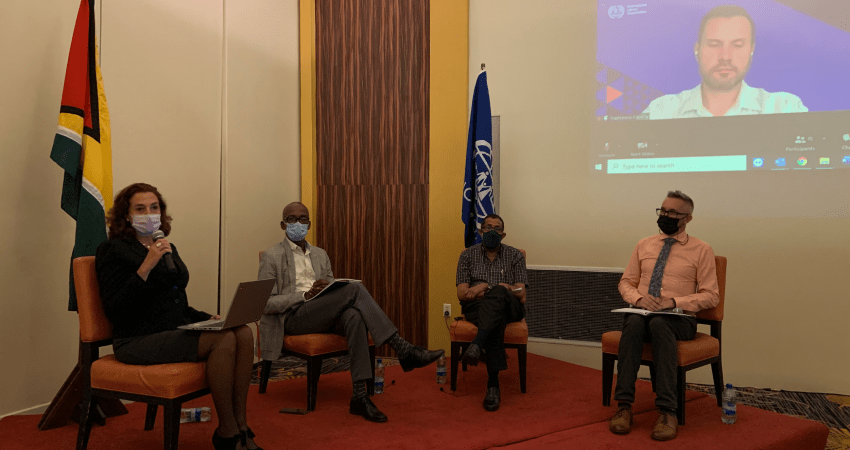New IOM Study Finds Connection Between Emerging Petroleum Sector and Increased Travel to Guyana from the Caribbean

Between 2013- 2018, nationals from the Caribbean were recorded as having the highest increase in migration to Guyana when compared to those from Venezuela, Europe, and the United States of America (USA). This is according to a recent report from the International Organization for Migration (IOM), titled Planning for Prosperity: Labour Migration and Guyana’s Emerging Economy.
The study was a first of its kind that investigated how labour management and labour migration, with an emphasis on fair and ethical recruitment, factor into Guyana’s future considering its new petroleum sector.
The report reveals a steady increase of migration to Guyana from the Caribbean with Trinidad and Tobago, followed by Haiti and Suriname, having the highest inflows to the country between 2018-2020. Moreover, in 2018 persons arriving and departing Guyana from the Caribbean numbered 137,433, while persons from the US, the next largest travel group for that period, amounted to 89,456. The labour study attributes these travel trends to Guyana’s emergent oil and gas industry, and subsequent sectors, where it is estimated that up to 160,000 jobs will be in demand in the coming years.
Such findings, according to IOM Guyana Chief of Mission and Coordination Officer for the Caribbean, Robert Natiello, indicate that the dynamics of migration in Guyana are changing as the country is positioned to be one of the largest oil producing countries in the Western Hemisphere.
The IOM official explained that Guyana’s main economic assets have traditionally been its natural and agricultural resources, which continue to be key contributors to the country global market. However, Guyana’s labour force will be transformed to supply the demand in the oil and gas and peripheral sectors.
“As the labour force in Guyana is expected to be transformed, this labour migration study highlights that the demand for labour in the medium-term will not only come from the oil and gas sector but also from peripheral sectors such as construction, hospitality and tourism,” said the Chief of Mission.
He added that, based on these findings, it is imperative to engage the private sector, and other stakeholders on labour migration and ethical recruitment as they will directly be impacted by this transformation.
Following the presentation of results by lead researcher consultant, Richard Rambarran, a panel discussion was conducted to provide a better understanding of how different actors view their role in the development, manage and governance of labour and migration in Guyana. Panellists included Minister of Labour Joseph Hamilton, Private Sector Commission Chairperson, Jairam Petam, International Labour Organisation Specialist, Francesco Carella, and IOM Specialist, Michela Macchiavello.
The discussion facilitated engagement with the private sector, government agencies and other stakeholders on the findings of the study, the transformation of labour in Guyana as a result of the growth in the oil and gas sector, and the important role labour migration will play in the transformation of economy.
This study was implemented by IOM under the Western Hemisphere Program and funded by the U.S. Department of State Bureau of Population, Refugees and Migration.
Planning for Prosperity: Labour Migration and Guyana’s Emerging Economy can be found here.